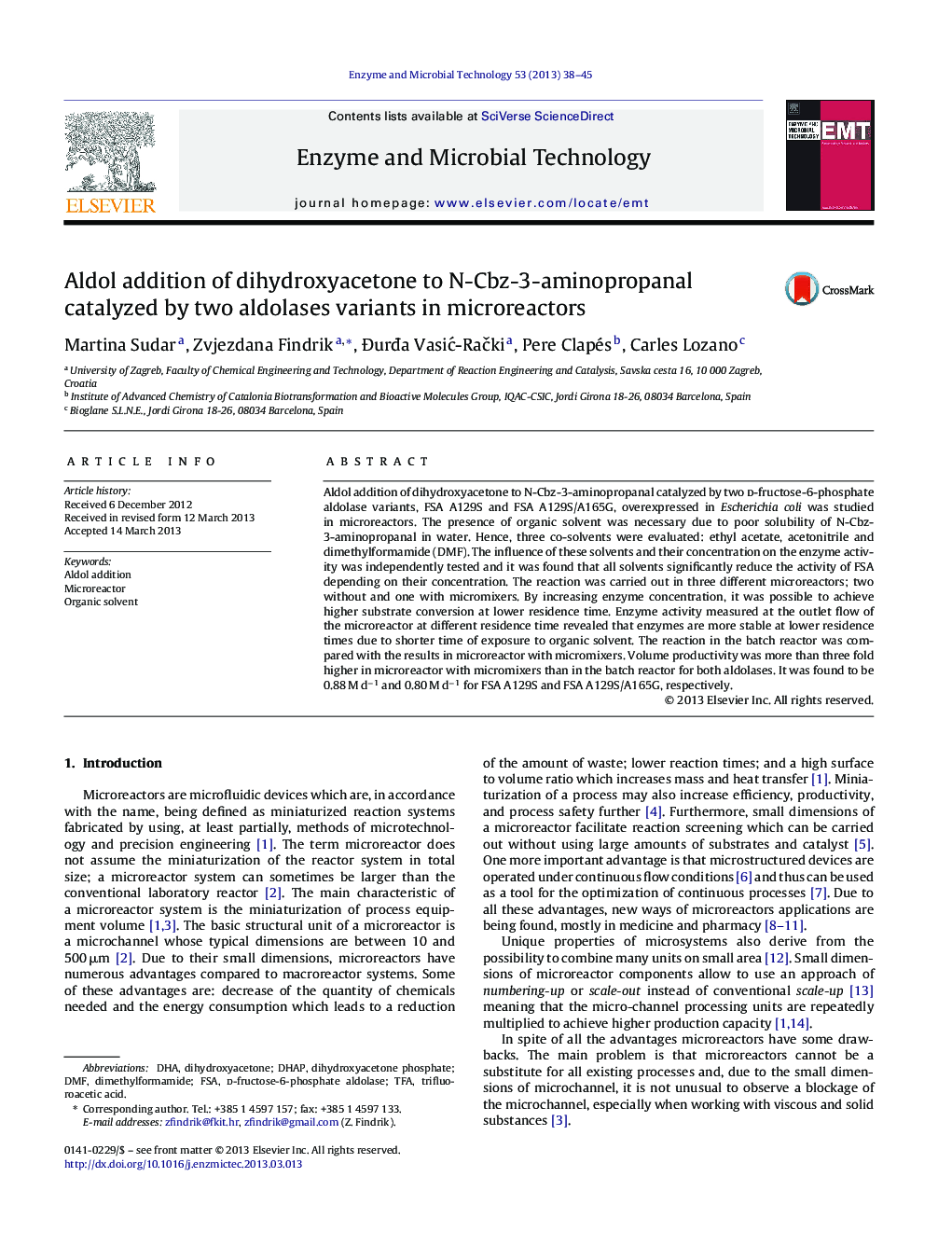| Article ID | Journal | Published Year | Pages | File Type |
|---|---|---|---|---|
| 17178 | Enzyme and Microbial Technology | 2013 | 8 Pages |
•Aldol addition catalyzed by two aldolases was carried out in microreactor.•Three co-solvents were evaluated: ethyl acetate, acetonitrile and dimethylformamide.•High enzyme concentration results in higher conversion at lower residence time.•Enzyme inactivation occurs in microreactor and increases with residence time.
Aldol addition of dihydroxyacetone to N-Cbz-3-aminopropanal catalyzed by two d-fructose-6-phosphate aldolase variants, FSA A129S and FSA A129S/A165G, overexpressed in Escherichia coli was studied in microreactors. The presence of organic solvent was necessary due to poor solubility of N-Cbz-3-aminopropanal in water. Hence, three co-solvents were evaluated: ethyl acetate, acetonitrile and dimethylformamide (DMF). The influence of these solvents and their concentration on the enzyme activity was independently tested and it was found that all solvents significantly reduce the activity of FSA depending on their concentration. The reaction was carried out in three different microreactors; two without and one with micromixers. By increasing enzyme concentration, it was possible to achieve higher substrate conversion at lower residence time. Enzyme activity measured at the outlet flow of the microreactor at different residence time revealed that enzymes are more stable at lower residence times due to shorter time of exposure to organic solvent. The reaction in the batch reactor was compared with the results in microreactor with micromixers. Volume productivity was more than three fold higher in microreactor with micromixers than in the batch reactor for both aldolases. It was found to be 0.88 M d−1 and 0.80 M d−1 for FSA A129S and FSA A129S/A165G, respectively.
